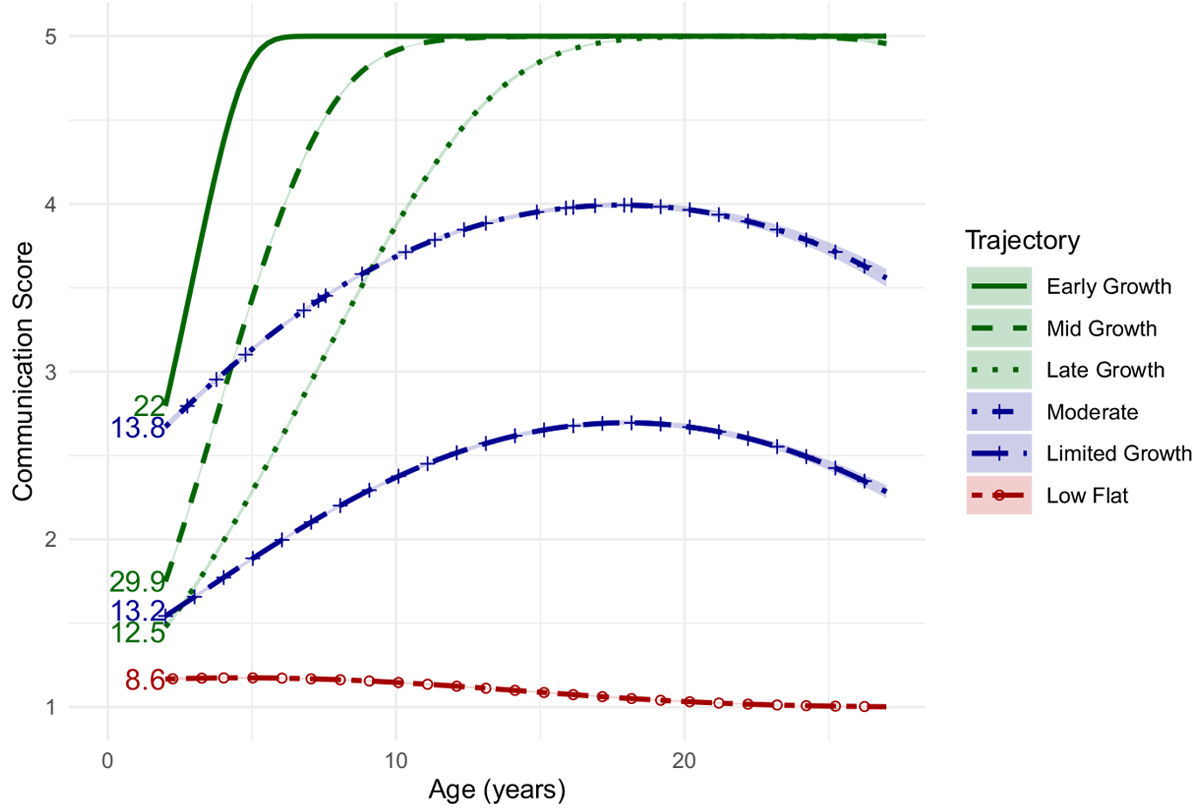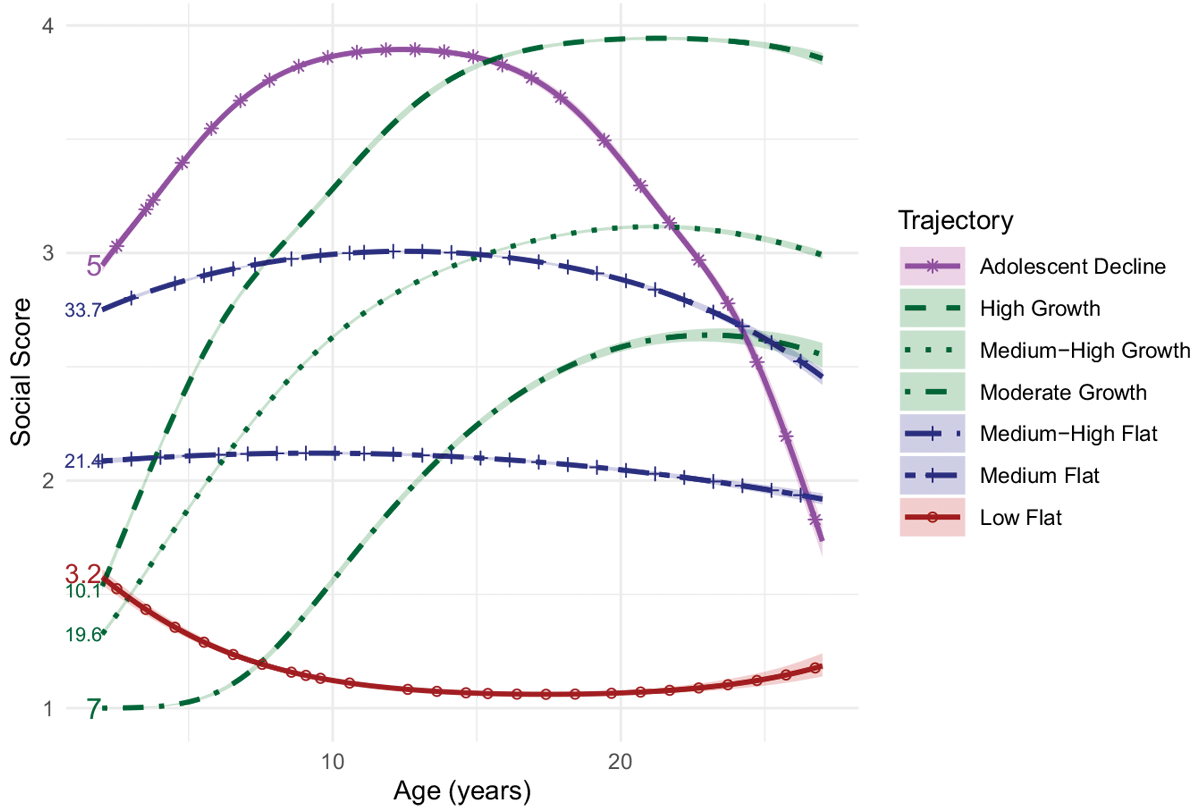The heterogeneity that characterizes autism also marks its developmental trajectories: The social and communication skills of most autistic children improve over time, but a small subset of children demonstrate high social functioning in childhood that declines during adolescence, according to a new longitudinal study.
“A lot of studies think of heterogeneity in a more static way,” says Jennifer Ames, research scientist at Kaiser Permanente Northern California in Oakland, who was not involved in the study. “This is showing that the heterogeneity is a lot more dynamic than that.”
The new work, published today in Pediatrics, tracked the communication and social skills of more than 71,000 autistic people from the time of diagnosis until age 27. The cohort’s communication skills typically fell into one of six trajectories, or seven for social functioning, according to statistical modeling, the investigators report.

On the whole, most study participants improved in their communication and social skills as they aged, at least until their skills plateaued. But 5 percent had a different pathway. After demonstrating high social skills early in childhood, this group’s skills declined “dramatically” around age 15, after the onset of puberty, says lead investigator Christine Fountain, associate professor of sociology at Fordham University in New York City.
Adolescents in this group were more likely to be girls, to be white and non-Hispanic, and to have a mother with only a high-school diploma. Most members of the group showed early and rapid communication development.
The differences seen in this group could be due to changing social stressors and expectations linked to puberty, Fountain says, as well as the onset of psychiatric conditions that appear later in adolescence. In future work, Fountain says, she plans to examine how the environment shapes the social expectations placed on this subgroup.
Children who exhibited greater improvement throughout development were more likely to come from families with more resources, as indicated by maternal education level, private insurance coverage, and higher median home values in their zip code. Plus, children of Hispanic, Black, Asian or foreign-born mothers were overrepresented in groups with reduced growth, whereas the children of white mothers were overrepresented in groups with increased growth.
“The breadth and inclusion of more nuanced socioeconomic-level variables is really important,” says Teresa Bennett, associate professor of psychiatry and behavioral neurosciences at McMaster University in Hamilton, Canada, who wasn’t involved in the study. Future studies should try to unpack “the mechanisms that link some of these early socioeconomic risk factors to different outcomes over time,” she adds.

The study used records from annual health evaluations collected by the California Department of Developmental Services for children born between 1992 and 2016. Each year, doctors evaluated the social and communication skills of each participant, using the Client Development Evaluation Report.
This measure is not a clinical assessment but rather an administrative tool to determine service needs, Fountain says. “It would be excellent to see something like this replicated using clinically validated measures.”
Another limitation of the study is that the sample only includes people with autism, so it’s not possible to compare their trajectories to people without autism or with other neurodevelopmental conditions, Ames says.
Finally, the giant cohort size makes it difficult to draw usable conclusions from the results, says Laurent Mottron, professor of psychiatry at the University of Montreal in Canada, who wasn’t involved in the study. “It’s just heterogeneity in, heterogeneity out.”
A stronger approach, he adds, would have been to stratify the cohort based on the children’s speech or social skills early in development — such as a group with delayed speech at age 3 — and then follow their trajectories, “instead of taking large groups and expecting a robot to make subgroups automatically.”
But the heterogeneity of the sample is also a strength, Fountain says. “It allows us to really get a sense for the entire population of California,” instead of focusing on a smaller clinical sample that is not representative of everyone.






